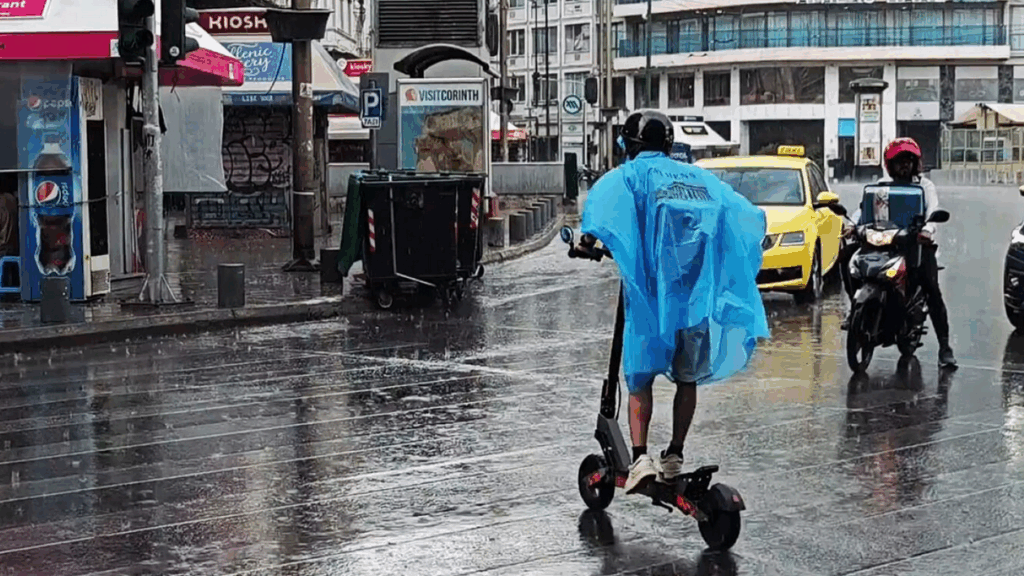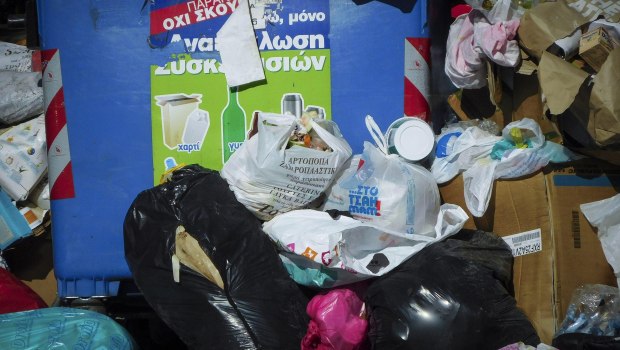Weather: Storms swept Western Greece yesterday, over 20,000 lightning strikes – Where the
Source: ProtoThema English
Western Greece was at the center of severe weather yesterday, with strong winds, squalls, and hailstorms hitting the area, causing significant problems mainly in Corfu, Kozani, and Grevena. The bad weather will persist today with rain, thunderstorms, and local hailstorms in the west, central, and northern parts of the country, with gradual improvement expected across all regions.
Specifically, in Corfu, Paxoi, and Epirus, locally heavy rain and thunderstorms are forecast during the early morning hours, accompanied by temporary hail. Winds will blow up to 5 Beaufort, and locally up to 6 Beaufort, while African dust concentrations will also be relatively high.
✅Οι αναφορές του @Starchannelnew1 που μιλούν για ξεριζωμένα δέντρα στη Δυτική Μακεδονία, πτώση εξέδρας στα Ιωάννινα και ακόμη υδροστρόβιλο — ένδειξη ότι τα φαινόμενα είχαν πολύ ισχυρή κατακόρυφη ανάπτυξη και έντονη ηλεκτρική/τροφοδοτική δραστηριότητα. Από το μεσημβρινό δελτίο…
— Theodoros Kolydas (@KolydasT) August 30, 2025
In a post, meteorologist Thodoris Kolydas noted that the phenomena showed very strong vertical development and intense electrical and feeding activity. These are consistent with the image of a powerful overshooting top, which generates strong winds, pressure fluctuations, electrical charges, and extreme hail or waterspout events.
In another post, the Star meteorologist pointed out that “the storm in Corfu was very powerful and showed an overshooting of 11.24°C, meaning that the cloud top rose about 1–3 km above the tropopause. The value –11.24°C refers to the temperature difference between the cloud-top temperature and the environmental temperature at the height of the tropopause. In other words, the cloud was 11.24°C colder than the tropopause. This translates into a significant overshoot: typically such deviations correspond to cloud tops rising 1–3 km above the tropopause.”
Thus, the storm did not stop at the tropopause but continued dynamically higher, penetrating into the stratosphere, because the strong updraft had enough momentum to break through the “lid” of the atmosphere.
Why this happens
In very strong storms (supercells, mesoscale convective systems), the thermal convection is so intense that the upward currents “pierce” the tropopause. Although the stratosphere is a stable layer (temperature increases with height), the updraft has such kinetic energy that it causes temporary penetrations. The phenomenon is associated with intense electrical activity, strong winds, hail, and sometimes the creation of gravity waves that propagate into the stratosphere.
[embedded content]
The storm swept Western Greece yesterday
Yesterday, torrential rain flooded streets in the city of Corfu, both in the historic center and around the city.
Damage was also reported to the power grid, leaving Corfu’s city center and villages in the north without electricity for several hours.
At the airport, no aircraft take-offs or landings were carried out due to heavy rain, lightning activity, and low cloud cover.
In Ioannina, strong winds toppled the stage where Anna Vissi, Antonis Remos, and Christos Mastoras were scheduled to perform a concert yesterday.
In Grevena, parts of the city and nearby villages remained without power for hours due to fallen trees on HEDNO power pylons. Affected areas included Tsotyli, Amygdaliai, Sýndendro, Kydonies, and other villages in Grevena and Voio, Kozani.
More than 20,000 lightning strikes recorded until Saturday evening in northwestern Greece
Rain and thunderstorms hit Corfu, Epirus, and areas of Western Macedonia from midday until early evening on Saturday, August 30, 2025.
[embedded content]
Analysis of data from the third-generation European weather satellite Meteosat-12 and its Lightning Imager (LI) instrument showed that by 21:00 on Saturday evening, over 20,000 electrical discharges had been recorded in these regions, nearly 8,000 on land and almost 12,000 at sea, as shown in the map below.

It should be noted that electrical discharges include lightning strikes (cloud-to-ground), discharges between clouds, and discharges between clouds and the surrounding air.
Ask me anything
Explore related questions
The original article: belongs to ProtoThema English .




